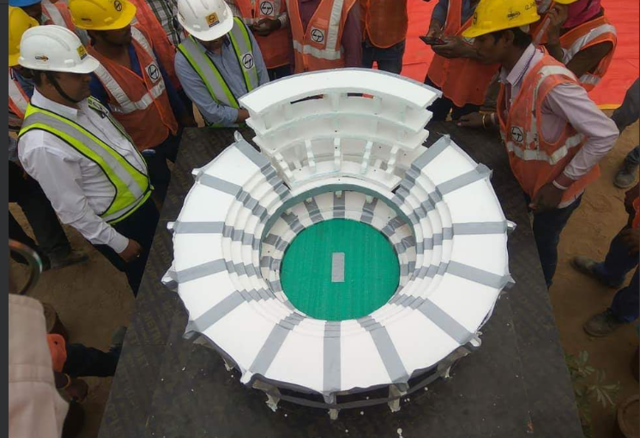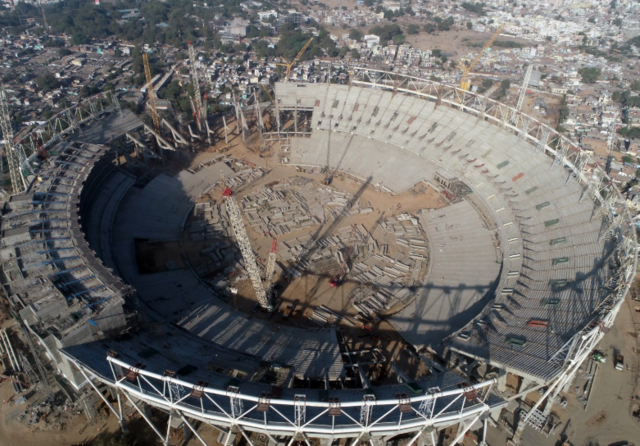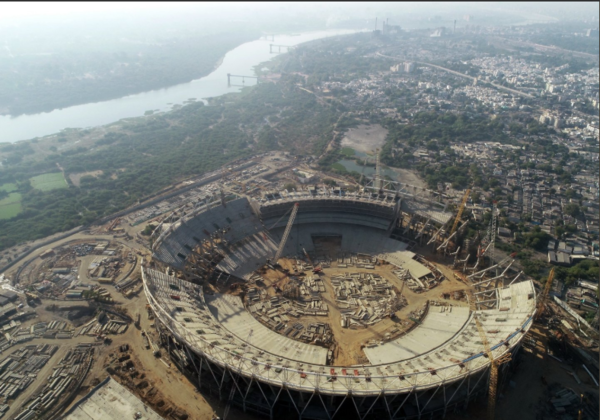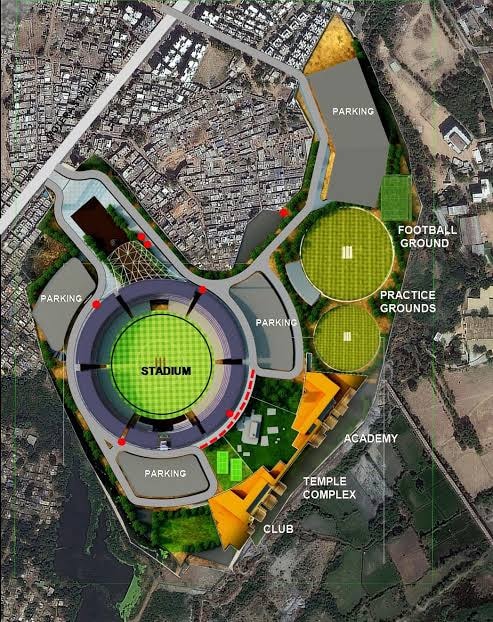
India, the cricket frenzy nation has a big reason to celebrate. The world’s largest cricket stadium is coming up in Motera, Gujarat. Located in Motera near Ahmedabad in Gujarat, and named after the iron man of India, Sardar Patel, the stadium will take nearly two years to complete and will be bigger than Melbourne cricket stadium.
Parimal Nathwani, who is Rajya Sabha MP (Jharkhand) and Vice President of Gujarat Cricket Association shared the information and some pictures on Twitter.
Following text from Populous Website.
Populous is designing of the world’s largest cricket stadium, Motera Cricket Stadium, in Ahmedabad, India. The project will be home to the Gujarat Cricket Association and is being built in collaboration with India’s top contractor Larsen & Toubro.
CHALLENGE. Spread across 63 acres, the 110,000 seat stadium will more than double the capacity of the old stadium and hold 10,000 more people than Australia’s iconic Melbourne Cricket Ground.
One of the main challenges for the design team was the tight timeframe. Despite its size, the stadium will be constructed in just two years. It will include 76 corporate boxes, four-team dressing rooms and facilities, state-of-the-art club facilities with three practice grounds, an indoor cricket academy and an Olympic-size swimming pool.
The sheer scale of the project presents its own challenge in providing each and every one of the 110,000 seats with full unobstructed views of the field.
INNOVATION. Populous is drawing on its international experience for this precinct including high profile cricket stadiums such as Lord’s Cricket Ground in London and the MCG in Australia.
The design of Motera Cricket Stadium revolves around two large seating tiers, each with approximately 50,000 general admission seat capacity; and a huge single patron concourse with 360-degree views of the field. The seating bowl has been designed in a way that directs patrons to fill the lower levels for smaller events. This will help in maintaining the spectator atmosphere even when the seating bowl isn’t full.
Motera Cricket Stadium’s pedestrian flow is also innovative with all vehicular movement on the ground level while pedestrian movement will be on a level above, ensuring clear segregation to limit congestion. General spectators approach from the North side of the stadium, entering on the first floor via a 12-metre high ramp.
IMPACT. Motera Cricket Stadium will not only be for major local and international cricket matches, it will also be for the community use. A community indoor cricket academy will be housed under the podium in the stadium, with a dormitory for up to 40 athletes, allowing students from across India and the globe to attend. The academy also has access to six indoor practice pitches and three outdoor practice fields.
Once completed, the stadium will become an iconic sports venue for both aspiring and elite players. It will become one of the world’s great cricket stadiums, putting the Gujarat Cricket Association on the global sporting map.
News Source: Business Insider.












